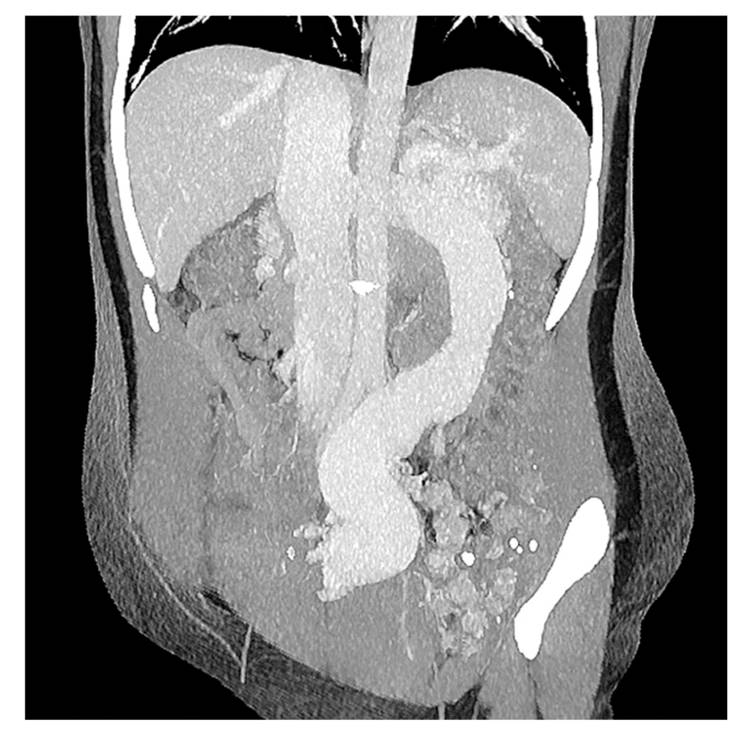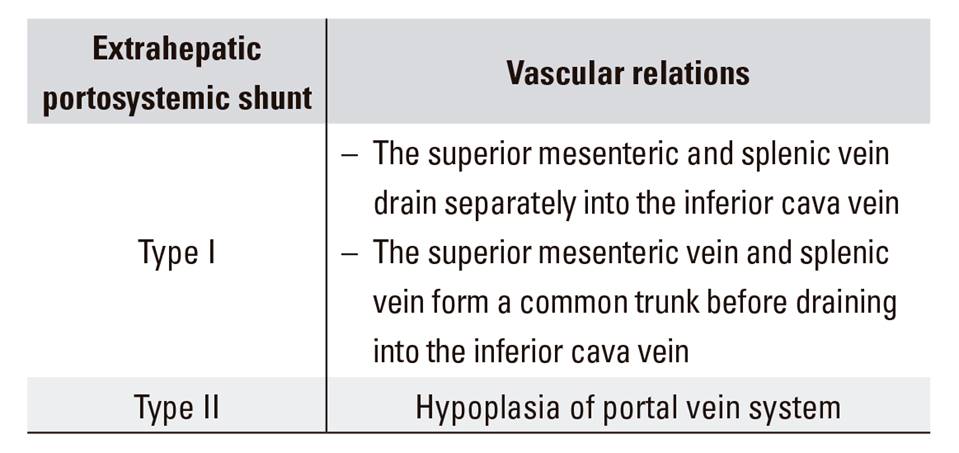Meu SciELO
Serviços Personalizados
Journal
Artigo
Indicadores
-
 Citado por SciELO
Citado por SciELO -
 Acessos
Acessos
Links relacionados
-
 Citado por Google
Citado por Google -
 Similares em
SciELO
Similares em
SciELO -
 Similares em Google
Similares em Google
Compartilhar
Revista Española de Enfermedades Digestivas
versão impressa ISSN 1130-0108
Rev. esp. enferm. dig. vol.110 no.10 Madrid Out. 2018
https://dx.doi.org/10.17235/reed.2018.5615/2018
PICTURE IN DIGESTIVE PATHOLOGY
Lower gastrointestinal bleeding as a form of presentation in an adult case of Abernethy syndrome
1Unidad de Cirugía Hepato-Bilio-Pancreática. Hospital Universitario Central de Asturias. Oviedo. Spain
CASE REPORT
A 29-year-old female presented with rectal bleeding. Colonoscopy revealed rectal varicose veins and additional studies were performed. Doppler ultrasound and abdominal computed tomography angiography showed a hypoplastic portal system, with a colateral portosystemic vein in confluence between the superior mesenteric vein and splenic vein, connecting to the left hipogastric vein via its distal end (Fig. 1). Two hepatic hemangiomas were diagnosed via abdominal magnetic resonance imaging (MRI) (Fig. 2). Type II Abernethy syndrome was confirmed based on these findings.
DISCUSSION
Abernethy syndrome is a congenital malformation characterized by agenesis or hypoplasia of the portal vein, causing an extrahepatic portosystemic shunt. It is classified in two types according to vascular relations (Table 1).
Type I is more frequent in females and is usually associated with vascular malformations and hepatic tumors. Type II has no sex predominance and no other malformations have been described. Hepatic encephalophaty and an altered liver profile are the most frequent clinical manifestations. Computed tomography angiography is the main radiological diagnostic test. Type II treatment in oligosymptomatic patients is conservative. Liver transplant is the only treatment described for type I Abernethy syndrome.
BIBLIOGRAFÍA RECOMENDADA
1. Ávila LF, Luis AL, Encinas JL, et al. Shunt porto cava congénito. Malformación de Abernethy. Cir Pediátr 2006;19(4);204-9. [ Links ]
2. Benedict M, Rodríguez-Davalos M, Emre S, et al. Congenital extrahepatic portosystemic shunt (Abernethy malformation type II) with associated hepatocellular carcinoma: case report and literature review. Pediatric Dev Pathol 2017;20(4);354-62. DOI: 10.1177/1093526616686458 [ Links ]
3. Laborda A, Guirola JA, Medrano J, et al. TIPS treatment in a patient with severe lower gastrointestinal bleeding with a misdiagnosis of cirrhotic portal hypertension. Rev Esp Enferm Dig 2015;107(12):766-7. DOI: 10.17235/reed.2015.3794/2015 [ Links ]











 texto em
texto em 





